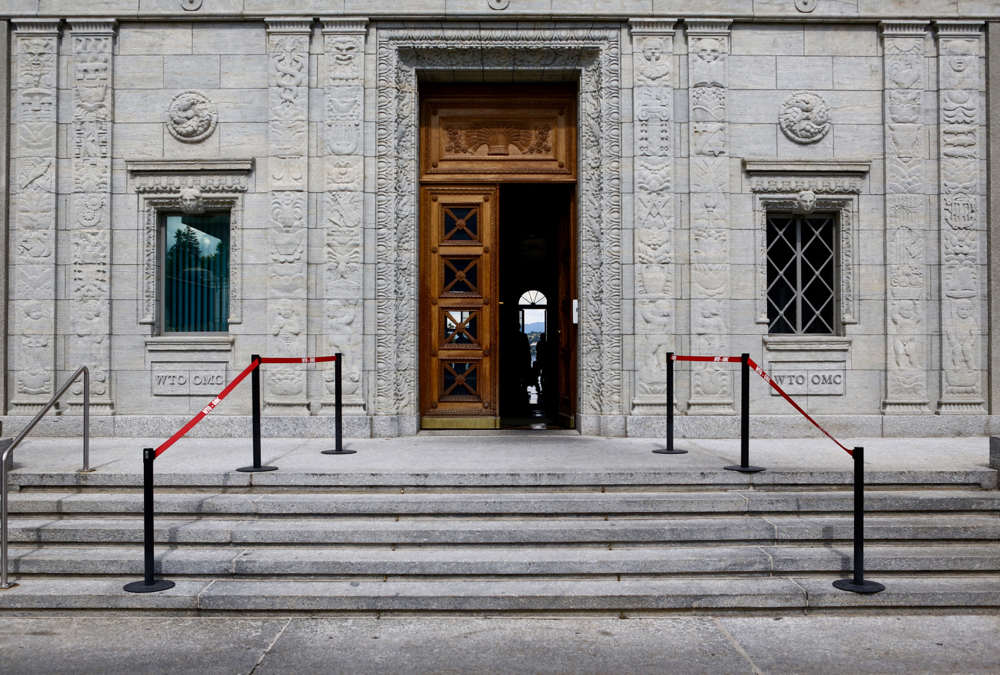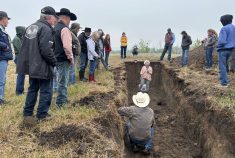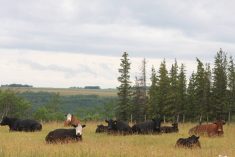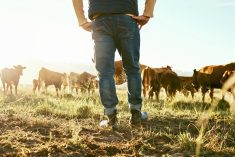Given everything that’s happening globally, it must take relentless optimism and determination to maintain existing trade relationships and broker new ones these days. That was my main impression as I watched a trade panel organized by the North American Association of Ag Journalists in late 2021.
The panel comprised three trade veterans: Gregg Doud, who served as the chief agricultural negotiator in the Office of the United States Trade Representative during the Trump administration; Ted McKinney, CEO of the National Association of State Departments of Agriculture and former USDA trade undersecretary; and Mike Gifford, former chief Canadian ag trade negotiator for Canada during the original NAFTA negotiations, as well as the Uruguay Round of the General Agreement on Tariffs and Trade (GATT).
Read Also
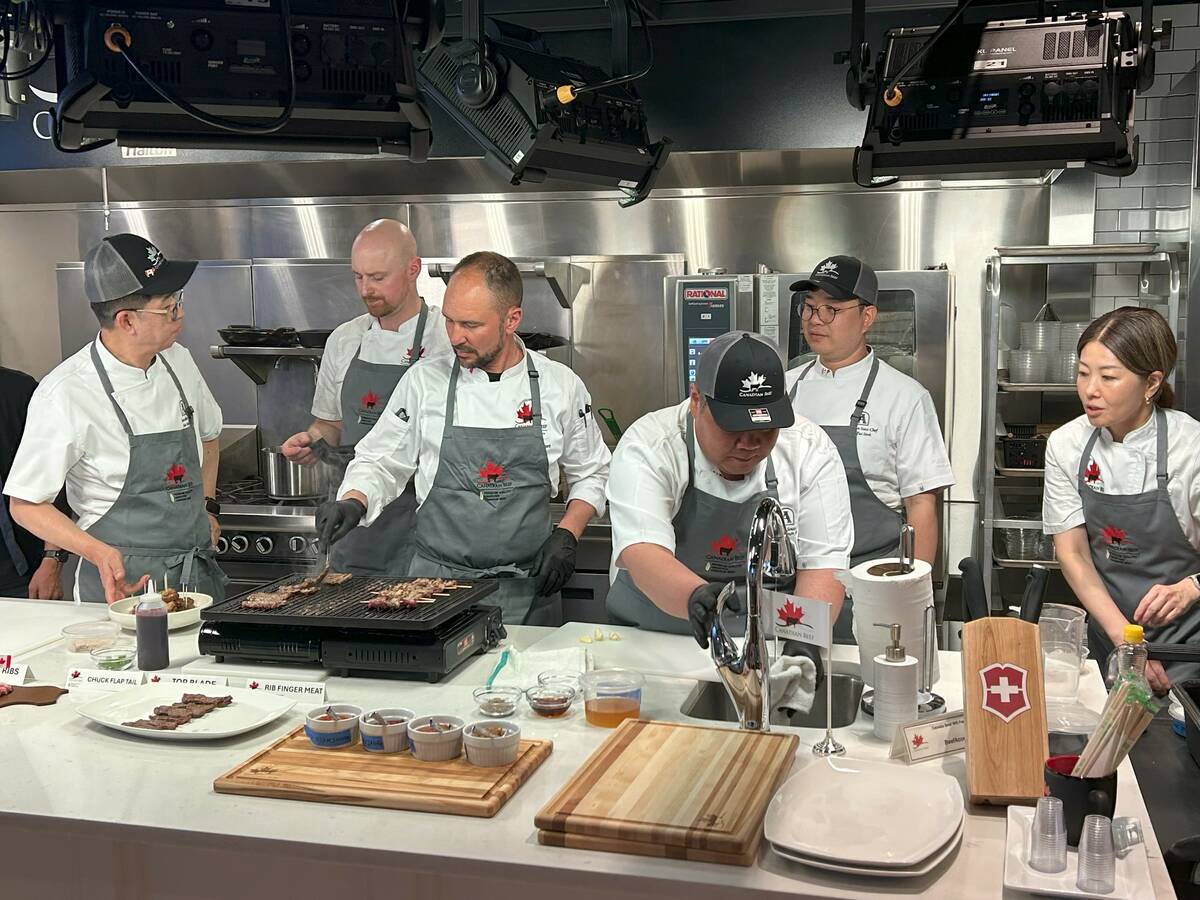
Promoting Canadian beef in Korea
Canada Beef reports on recent activities, including working with an influencer and an executive chef from Korea
Here are a few highlights from their talk.
Relations with China
Nobody thought China would import as much corn as they have in the last couple of years, Doud says. African swine fever is driving those imports. China also made a “historic decision” nearly two years ago to ban feeding swill and food scraps to hogs.
“Keep in mind, China has half the hogs on the planet,” Doud says, and half of those hogs were fed swill. China’s hog producers have expanded into Western-style confined hog operations, many of which are six or seven stories high.
Opening China’s market to beef took some “remarkable” conversations, Doud says, but U.S. exports to China have exceeded expectations. Over half of world beef trade goes to China today, he adds. Doud sees “a lot of underlying strength fundamentally in the cattle market.”
But there’s no turning a blind eye to the tension between China and the U.S. McKinney wants to keep China as a trading partner, and thinks it’s possible. He says he has high regard for the people on China’s trading team. But he also sees the potential for problems ahead.
“The U.S., and I daresay the world, must diversify its export focus,” says McKinney, so that “if things go awry with China, there are those other markets.”
Gifford notes that a few years ago, he was hopeful that Canada could participate more aggressively in China’s market, given the success of trade initiatives at that time. But things don’t look so rosy these days.
On whether or not China would succeed in joining the Comprehensive and Progressive Agreement for Trans-Pacific Partnership (CPTPP, also referred to as the TPP), Gifford was cautiously optimistic.
“It’s clear that this is going to be a difficult and protracted negotiation. Any existing member of the TPP can block China’s application. But I think most of them will want to first see what China’s offer is.”
Three or four years ago, Canada would have quickly welcomed China joining, says Gifford, but “recent experience, particularly with hostage diplomacy and economic coercion, has really soured … relations.”
The TPP was initiated by the Americans, but they ultimately declined to join. Doud says the ag components of the deal were quite good, but there were issues with vehicle imports.
McKinney adds that at that time, both sides in Congress were saying the deal was dead on arrival, but he hopes they’ll look at it again. “I think we’re finding that the more you can align with people on trade, particularly when China needs some containment and some rules-based involvement, maybe it’s worth looking at. But there’s a lot to fix there.”
Gifford says that most TPP members would “undoubtedly welcome” U.S. participation in the deal. “I think, ideally, it would be good to see China and the U.S. in, if it could be done.”
India and the WTO
Asked whether there was any optimism that we’d move back to multilateralism, Doud says he couldn’t justify spending time on World Trade Organization (WTO) issues when India would block any movement. That meant the way to move forward, by default, was bilateralism. But both he and McKinney agree that doesn’t mean the U.S. is going to walk away from the WTO.
“We may have to take our two or three Valiums a day and get through it because the moment you go to bilateral/multilateralism, it’s those that can flex their muscle the largest, beat their chest the hardest, that are going to win. And that is not a win-win,” says McKinney.
McKinney says that geopolitically, it’s going be the “wild, woolly West until we get the WTO more fully functioning and that can take a lot of twists and turns.”
Whether bilateral, trilateral or regional agreements play out remains to be seen. “All these can be good, country by country, but they start to undermine the uniformity that comes with a global system that comes with the WTO, or before it the GATT.”
If India recognizes it needs trade, the country would be an incredible two-way trading partner, says McKinney. Much of the population growth is going to be in India and Africa, and the benefits of trade to India are “so enormous, that I hope that they’ll come around, and I do believe that they will at some point, just because they’re going to have to.”
Gifford thinks that India will eventually get on board with multilateralism, as India’s current attempts at reform indicate the country is moving in that direction. He sees U.S. leadership at the WTO as instrumental to making progress.
“I know it’s a lot easier in some respects to do bilaterals or regional trade agreements. But you’ve got to toil in the mines in Geneva to get the WTO moving again.”
A few magazine updates
Steve Kenyon’s last column appeared in the December issue of the magazine, and I wanted to thank him for writing for us over the years. Although From the Ground Up has wrapped, I hope to include Steve’s writing from time to time.
New to our January 2022 issue is Foraging, a regular column that will feature a different writer each issue covering everything from soil health to forage to grazing management. If you have any suggestions for writers you’d like to see in that space, please drop me a line at [email protected].


